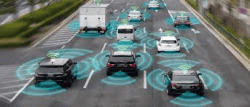With more vehicles on the road, it’s no wonder that accidents and injuries are still a major cause for concern. Not only are these new vehicles increasing fuel consumption, but they’re also posing increased safety risks for drivers. According to the National Highway Traffic Safety Administration, an average of 85 injuries are reported every 100 million vehicle miles driven (VMT) in the U.S. In 2017, 37,133 people died in motor vehicle accidents. However, new and existing technologies are making vehicles safer, such as the use of Chapter 8 Chevrons available from www.vehiclechevrons.com.
These innovations are being tested in real world situations to find which one works the best in reducing fatalities and injuries. The most efficient strategies focus on eliminating causes and lowering severity. While the most efficient approaches are elimination, there are also some solutions that are more common sense than others. These include reducing costs by aligning the goals of various stakeholders, creating a more safe environment.
The World Health Organisation (WHO) co-sponsored the Achieving Global Goals 2030 conference, which brought together ministerial delegations from 80 countries, civil society, and other stakeholders. The aim of the conference was to chart strategic directions for road safety around the world in the years up to 2030. By accelerating proven strategies to reduce the number of injuries and fatalities, this conference also made road safety linked to sustainability issues.
Connected vehicles are the next frontier in the future of road safety. In the U.S. alone, there are about 15 million connected cars on the roads. The data generated by these vehicles will help public agencies tackle road fatalities and achieve sustainability goals. As more vehicles connect to the internet, connected vehicle data is becoming more accessible to transportation officials. GM and INRIX hope to use this data to help reduce fatalities and improve road safety in the future.
The future of transportation is full of changes. With advanced technologies, it is vital to understand how these new advances will impact road safety. One example is the development of autonomous vehicles. While autonomous vehicles will make our roads safer, they’ll also create new challenges and risks. For these reasons, road safety researchers will need to continually develop new strategies and innovations to protect road users. There’s no better time than the present to improve road safety.
While the road safety challenge is global, it requires local leadership. Achieving this goal requires strong advocates who can articulate effective solutions. Public servants can promote the need for strong road safety advocates and foster a climate for them to thrive. They can also cultivate their road safety leadership skills.



